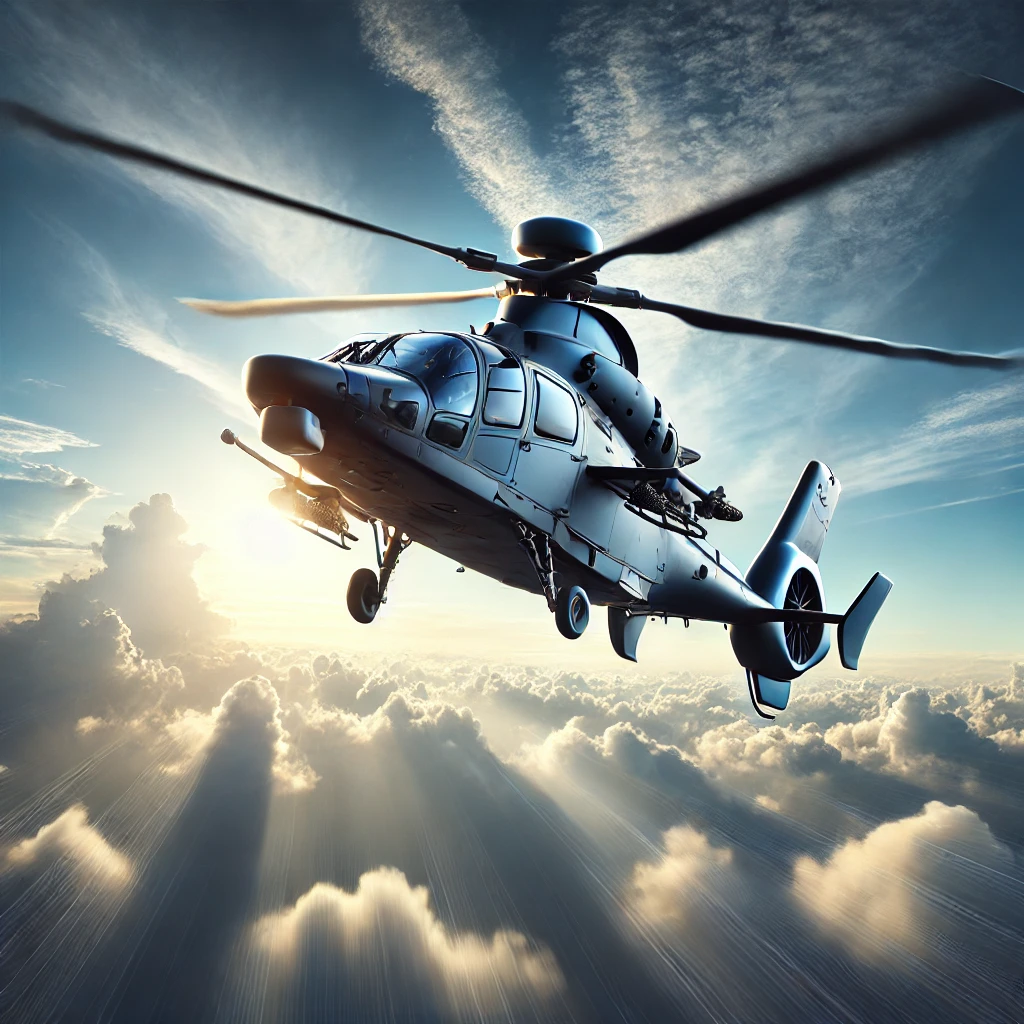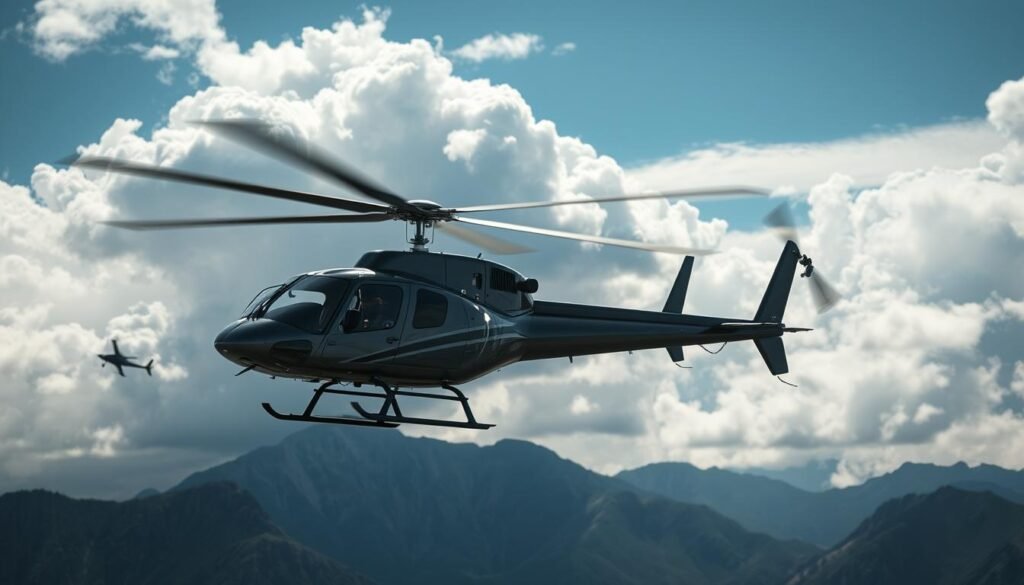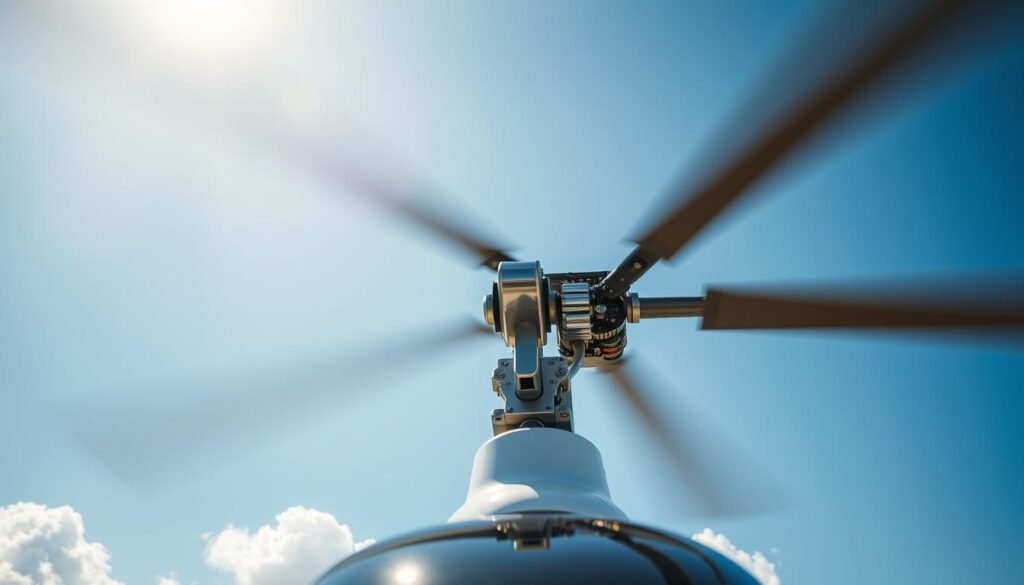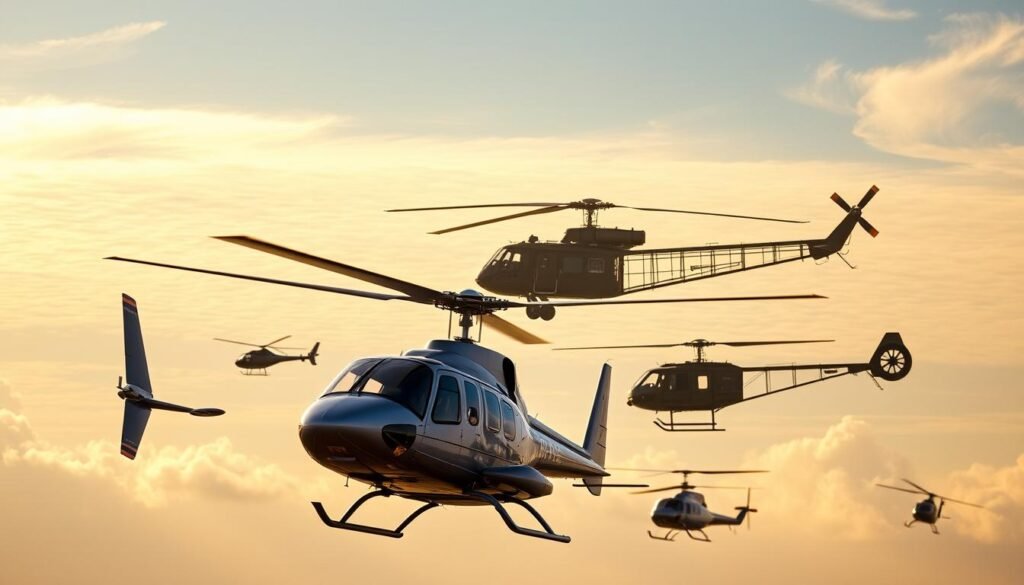Can helicopters fly upside down? Most helicopters cannot due to aerodynamic and mechanical constraints, but specialized stunt helicopters push these limits. These marvels of engineering excel in maneuverability and versatility but face unique challenges when it comes to inverted flight. This article explores the physics behind helicopter flight, common myths, and the future of rotorcraft innovation, shedding light on the fascinating world of aviation technology.
1. Understanding Helicopter Aerodynamics
Helicopters achieve flight through the lift generated by their rotor blades. Unlike fixed-wing aircraft, helicopters rely on spinning rotors to create both lift and thrust. This design provides exceptional maneuverability but also introduces unique aerodynamic constraints:
- Lift Dynamics: Rotor blades are shaped to direct airflow downward, creating lift. When a helicopter is inverted, this airflow direction is reversed, disrupting lift generation. Conventional rotor blades cannot produce sufficient lift in this configuration.
- Rotor Mechanics: Helicopters typically have rotors that spin in a fixed direction. This design ensures stability and control during normal operations, but flipping the helicopter upside down can cause aerodynamic imbalance and potential mechanical failure.
- Flight Physics: The inherent stability of helicopters comes from their ability to balance forces between the main rotor and tail rotor. Inverted flight disrupts this balance, making sustained control virtually impossible without specialized technology.
These aerodynamic principles highlight why traditional helicopters are not designed to fly upside down, emphasizing the importance of their specific engineering for conventional flight operations.
2. The Role of Rotor Blade Design
Rotor blades are meticulously engineered with an airfoil shape that is essential for generating lift. This design determines how effectively a helicopter can achieve and maintain flight. When a helicopter is inverted:
- Loss of Lift Efficiency: The airfoil’s curved shape, designed to push air downward, becomes ineffective. Airflow in the reversed direction negates the blade’s ability to produce lift.
- Structural and Mechanical Constraints: Most rotor blades are optimized for upright operations. Stress caused by reversed airflow during inversion can lead to mechanical strain or even failure.
- Symmetrical Blade Potential: For helicopters capable of inverted maneuvers, symmetrical blade designs are critical. These blades can generate lift equally in both directions, allowing for controlled flight during aerobatic stunts.
Understanding rotor blade design underscores why inverted flight is beyond the capabilities of conventional helicopters. It also highlights the engineering advancements in stunt helicopters that push these limits for specialized applications.
3. Stunt Helicopters and Inverted Flight
While traditional helicopters cannot fly upside down, stunt helicopters designed specifically for aerobatic performances showcase the potential of rotorcraft to defy typical flight limitations. These specialized helicopters employ advanced engineering to handle extreme maneuvers:
- The Red Bull Helicopter: A highly modified BO-105, this helicopter is renowned for its jaw-dropping aerobatic displays. Its advanced rotor system allows for loops, rolls, and even brief periods of inverted flight, demonstrating the pinnacle of helicopter agility.
- Fully Articulated Rotor Systems: Certain stunt helicopters are equipped with rotor systems that allow each blade to move independently. This design enables them to withstand the stresses of inverted maneuvers without compromising stability.
- Specialized Training for Pilots: The ability to perform these stunts is not just a feature of the helicopter but also the result of rigorous pilot training. Aerobatic helicopter pilots undergo extensive preparation to safely execute high-risk maneuvers, including brief inverted flights.
These examples illustrate how innovation and expertise combine to push the boundaries of what helicopters can do, captivating audiences and inspiring advancements in rotorcraft technology.
4. Why Most Helicopters Cannot Fly Upside Down
The inability of most helicopters to perform inverted flight stems from a combination of design, operational, and safety factors. Here’s an in-depth look at why:
- Structural Limitations: Conventional helicopter airframes and rotor systems are designed for upright flight. Inverted operations introduce stress and forces that these components are not built to endure, potentially leading to mechanical failure.
- Engine and Fuel Systems: Most helicopters rely on gravity-fed fuel systems that function optimally in an upright position. Prolonged inverted flight disrupts fuel delivery, leading to engine failure.
- Aerodynamic Instability: Unlike stunt helicopters with symmetrical rotors, standard rotor blades are optimized for unidirectional lift. Inverted flight reverses airflow, rendering the blades ineffective at generating the necessary lift to maintain flight.
- Control and Maneuverability Challenges: Pilots of standard helicopters are not trained or equipped to handle the complexities of inverted flight. Maintaining stability, direction, and control while upside down requires specialized equipment and extensive training, which are not part of conventional operations.
Understanding these limitations emphasizes the critical design choices that make helicopters reliable for their intended purposes while highlighting the specialized nature of inverted flight in aviation.
5. Common Myths About Helicopters Flying Upside Down
Helicopters’ capabilities often spark misconceptions, particularly when it comes to inverted flight. Let’s address some of the most common myths:
- Helicopters Can Hover Upside Down: This is false for conventional helicopters, as their rotor systems and aerodynamics are not designed to generate lift in an inverted position. Even for stunt helicopters, maintaining an upside-down hover is practically impossible.
- All Helicopters Can Perform Rolls: While some stunt helicopters, like the Red Bull-modified BO-105, can execute rolls, these maneuvers require specialized rotor systems and significant structural reinforcement. Standard helicopters are not equipped for such dynamic movements.
- Inverted Flight is Safe: Inverted flight is a high-risk maneuver even for helicopters capable of aerobatics. It requires advanced pilot training, precise control, and optimal environmental conditions. These factors make inverted flight rare and unsafe outside controlled environments.
By dispelling these myths, we gain a clearer understanding of the capabilities and limitations of helicopters, emphasizing the importance of proper design and training for safe operations.
6. Future Innovations and Possibilities
The limitations of traditional helicopters in performing inverted flight have sparked innovative ideas and technological advancements that may redefine rotorcraft capabilities in the future. These developments aim to address current challenges while opening new possibilities:
- Symmetrical Blade Designs: Research into rotor blades with symmetrical airfoil shapes could enable lift generation in both upright and inverted orientations. Such designs would significantly expand the maneuverability of helicopters.
- Adaptive Rotor Systems: Next-generation rotor systems may include variable-pitch mechanisms and dynamic adjustments that allow blades to adapt to changing airflow conditions, facilitating inverted flight and other advanced maneuvers.
- Enhanced Stability and Control Systems: Advanced gyroscopic stabilization, coupled with AI-driven autopilot systems, could improve the safety and precision of aerobatic maneuvers, making inverted flight more accessible to trained pilots.
- Hybrid Rotorcraft and Drone Technologies: Combining traditional helicopter designs with drone-like features, such as multiple rotors and redundant control systems, could increase stability and expand the operational envelope for rotorcraft.
- Energy-Efficient Powertrains: Innovations in electric and hybrid propulsion systems may provide consistent power delivery even during complex maneuvers, reducing the mechanical strain associated with inverted flight.
These innovations promise to push the boundaries of what helicopters can achieve, paving the way for safer and more versatile rotorcraft capable of performing extraordinary feats.
7. Real-Life Applications of Inverted Helicopter Flight
Although inverted helicopter flight is not common in standard operations, there are specific real-world scenarios where this capability could have meaningful applications:
- Aerobatic Airshows: Inverted flight is a crowd-pleaser in aerobatic demonstrations, showcasing the agility and engineering sophistication of stunt helicopters. These performances inspire future innovations and attract attention to rotorcraft technology.
- Military Operations: In combat zones, inverted flight could provide tactical advantages for specialized maneuvers, reconnaissance, or evasion. While not yet mainstream, research into advanced rotor systems might make this possible in the future.
- Emergency Rescues: Although rare, inverted capabilities might prove beneficial in unique rescue scenarios where traditional approaches fail, such as navigating treacherous terrain or under specific structural obstacles.
These applications, while limited to highly specialized situations, highlight the potential of inverted helicopter flight as technology and pilot training advance.
The limitations of traditional helicopters in performing inverted flight have sparked innovative ideas and technological advancements that may redefine rotorcraft capabilities in the future. These developments aim to address current challenges while opening new possibilities:
- Symmetrical Blade Designs: Research into rotor blades with symmetrical airfoil shapes could enable lift generation in both upright and inverted orientations. Such designs would significantly expand the maneuverability of helicopters.
- Adaptive Rotor Systems: Next-generation rotor systems may include variable-pitch mechanisms and dynamic adjustments that allow blades to adapt to changing airflow conditions, facilitating inverted flight and other advanced maneuvers.
- Enhanced Stability and Control Systems: Advanced gyroscopic stabilization, coupled with AI-driven autopilot systems, could improve the safety and precision of aerobatic maneuvers, making inverted flight more accessible to trained pilots.
- Hybrid Rotorcraft and Drone Technologies: Combining traditional helicopter designs with drone-like features, such as multiple rotors and redundant control systems, could increase stability and expand the operational envelope for rotorcraft.
- Energy-Efficient Powertrains: Innovations in electric and hybrid propulsion systems may provide consistent power delivery even during complex maneuvers, reducing the mechanical strain associated with inverted flight.
These innovations promise to push the boundaries of what helicopters can achieve, paving the way for safer and more versatile rotorcraft capable of performing extraordinary feats.
Final Thoughts: Pushing the Limits of Helicopter Flight
While the majority of helicopters are not designed to fly upside down due to aerodynamic, mechanical, and operational constraints, specialized models and innovative engineering have demonstrated that inverted flight is possible under specific conditions. These rare capabilities showcase the remarkable ingenuity of rotorcraft technology and the skill of highly trained pilots.
The ongoing advancements in rotor systems, stability technologies, and hybrid designs suggest a promising future for helicopters, where even more extraordinary feats may become achievable. As these innovations continue to evolve, they not only expand the possibilities of helicopter performance but also inspire greater curiosity and admiration for the engineering behind these incredible machines.



